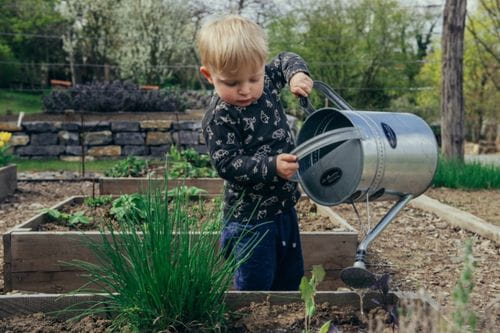The Ultimate Guide to Horticulture for Beginners: Step-by-Step Tips and Strategies for Growing a Flourishing Garden
Are you all set to dive right into the world of gardening? Look no more than "The Ultimate Guide to Horticulture for Beginners." This detailed guide will walk you with whatever you require to recognize to grow a thriving yard. From recognizing your yard area to picking the right plants and preparing the dirt, we have actually got you covered. Prepare yourself to release your eco-friendly thumb and develop an attractive, flourishing garden.
Recognizing Your Yard Space
Understanding your yard space is important for creating a thriving garden. This will aid you figure out which plants will certainly flourish in each area. gardening tools for beginners.
Following, examine the soil in your yard. Comprehending your dirt type will assist you in selecting the right plants and implementing proper soil changes. This details will certainly help you make educated decisions about watering and plant placement.
In addition, pay interest to any type of microclimates within your yard. These are small locations that may differ in temperature level or wetness degrees contrasted to the rest of your yard. For instance, a south-facing wall might maintain heat, creating a warmer microclimate. Use these variants to your advantage by growing moisture-loving or heat-loving plants in these locations.
Selecting the Right Plant Kingdoms

Next, consider your gardening objectives and preferences. Are you wanting to expand vegetables, blossoms, or a mix of both? Do you like low-maintenance plants or are you prepared to place in added effort for high-yield crops? Assume regarding the quantity of time, power, and sources you want to buy your yard.
Additionally, think about the space available in your yard. Take dimensions and prepare out the format of your plants. Think about the fully grown dimension of each plant and ensure they have adequate area to grow without congestion each various other.
Finally, assume concerning the usefulness of your plant selections. gardening tools for beginners. Will you have the ability to offer the essential care and maintenance for your chosen plants? Take into consideration aspects such as watering, feeding, pest control, and pruning
Preparing the Dirt for Planting
As soon as you have chosen the appropriate plants for your prospering garden, it's time to dive right into the important task of preparing the dirt for growing. Take a sample and test its pH levels, as various plants flourish in different pH ranges.

When the dirt is all set, create furrows or holes for planting. The depth and spacing will depend upon the particular demands of your selected plants, so refer to the seed packets or plant tags for advice. Gently place the plants in their assigned places, guaranteeing that the roots are covered with soil. Firmly press the dirt around the base of each plant to remove any air pockets.
As you water, be careful not to wash away the soil or damage the delicate plants. With proper dirt prep work, your yard will be fully equipped to support the development and success of your plants.
Watering and Fertilizing Techniques
After preparing the dirt for planting, it's vital to understand efficient watering and feeding methods to ensure the wellness and growth of your yard. When it concerns watering, it is essential to strike an equilibrium. Overwatering can bring about root rot and various other conditions, while underwatering can result in stunted development and wilting. The key is to give sufficient water to maintain the soil regularly moist however not filled. One way to evaluate if your plants require watering is by sticking your finger regarding an inch right into the dirt. If it feels completely dry, it's time to water. When watering, go for the base of the plants, as wetting the leaves can urge conditions. As for fertilizing, it's essential to give your plants the nutrients they require to grow. Organic fertilizers, such as compost or well-rotted manure, are excellent options as they supply a slow release of nutrients. It's finest to use plant foods in early spring or late fall, adhering to the instructions on the package. Keep in mind to sprinkle your plants after fertilizing to help the nutrients reach the roots. By mastering these watering and feeding techniques, you'll be well on your method to a flourishing garden.
Preserving a Healthy And Balanced Garden
To maintain a healthy and balanced garden, you must routinely visit examine your plants for signs of bugs or conditions. By doing this, you can capture any type of issues early on and take the required actions to avoid them from causing and spreading out damage to your whole yard.
One method to deal with pests is by utilizing natural treatments such as insecticidal soaps or neem oil. These work in managing common parasites like aphids, mites, and whiteflies without damaging beneficial bugs. An additional method is to urge useful bugs like lacewings and ladybugs, which feed on garden bugs. Planting flowers such as sissies, sunflowers, and marigolds will certainly draw in these valuable insects to your garden.
In addition to bugs, illness can additionally affect your plants. Appropriate spacing in between plants and good air blood circulation can also assist prevent the spread of diseases.
Conclusion
By comprehending your garden space, selecting the right plants, preparing the dirt, and carrying out proper watering and feeding strategies, you can develop a successful garden. With perseverance and commitment, you'll quickly be appreciating the appeal and bounty of your own flourishing yard.
Make use of these variations to your benefit by planting heat-loving or moisture-loving plants in these areas.
